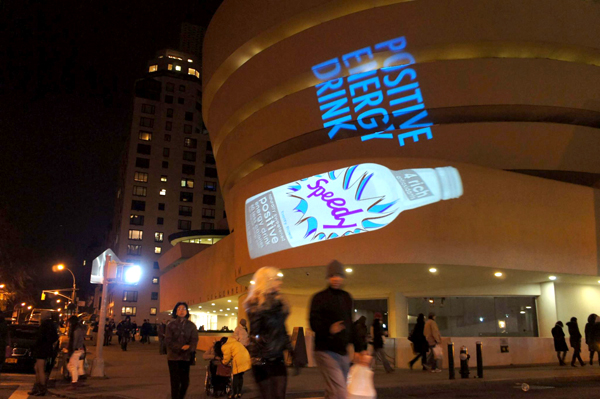Projecting your company’s logo onto a surface is a dynamic and eye-catching way to boost brand visibility, create atmosphere, and even provide directional signage. Far beyond traditional banners and static signs, logo projection offers a modern, high-impact marketing tool. Whether you are illuminating the side of a building, a bustling trade show floor, or a temporary event space, understanding the technology and techniques involved is key to a successful display. The core of this process revolves around the use of a specialized piece of equipment—the logo projector—and the stencil that creates the image, known as a gobo.
Understanding the Technology: Gobo Projectors and Templates
The most effective and professional way to project a sharp, bright logo is through a gobo projector, also known as a graphic or image projector. This powerful device is fundamentally different from a typical video or data projector, as it is specifically designed to cast a single, static image with exceptional clarity and light intensity.
The Role of the Gobo
The gobo is the small template that contains your logo design. It is the crucial element that determines the quality and detail of the final projected image. Gobos come in three main materials, each suited for different applications and budgets:
- Glass Gobos These are the premium choice, offering the highest resolution and best image quality, especially for complex designs, gradients, and full-color logos. Because glass does not require ‘taping’ or ‘bridging’—thin metal lines to hold interior parts of letters like ‘O’ or ‘A’ in place—it allows for flowing scripts and intricate details to be rendered perfectly. They are durable and suitable for high-powered projectors and long-term use.
- Metal Gobos A more budget-friendly option, metal gobos are best for simple, high-contrast, black-and-white, or single-color logos. They are highly durable, often lasting for years, but the design must be modified with small metal tabs to keep the inner parts of letters and shapes in place. This means they are unsuitable for detailed or photographic imagery.
- Film Gobos These are the least expensive and can support complex, full-color designs. However, they are fragile and have a very short lifespan—often only a few hours to a week—and can only be used in low-powered projectors. They are typically reserved for one-off events or short-term, low-budget projections.
Selecting the Right Logo Projector
Choosing the correct logo projector is essential for achieving the desired effect. The primary factors you must consider are the projection distance, the size of the image, the projection environment, and the surface itself.
- Brightness and Wattage The power of the projector, measured in watts (W) or lumens, directly impacts the brightness and visibility of the projected logo. For indoor use in dimly lit rooms, a low-wattage projector may suffice. However, for well-lit interior spaces, outdoor projections onto building facades, or long-distance projections, you will require a high-powered, high-lumen logo projector to overcome ambient light and maintain image crispness.
- Throw Distance and Lens The ‘throw distance’ is the distance between the projector and the surface. Projectors come with different lens options (e.g., narrow, medium, wide) that determine the size of the projected image at a given distance. You must calculate the required lens type based on your installation point and the desired image size. Some high-end models offer zoom lenses for greater flexibility.
- Environmental Rating For outdoor use, the logo projector must have an appropriate Ingress Protection (IP) rating, indicating its resistance to dust and moisture (e.g., IP65 or higher). This is vital for long-term installations on exterior walls or sidewalks.
Tips and Tricks for Perfect Projection
A successful logo projection requires careful planning beyond just purchasing the equipment. The following tips and tricks will help you maximize the impact of your visual display on any surface.
Preparing Your Artwork
The quality of the source image is non-negotiable. Always provide your gobo manufacturer with the highest resolution vector file of your logo (e.g., AI, EPS, or PDF). Vector graphics allow the logo to be scaled to any size without losing sharpness. If your logo is complex, consider simplifying it or using a glass gobo to preserve detail.
Choosing and Treating the Projection Surface
The surface you choose is your canvas, and its characteristics will affect the final result.
- Flat, Light-Colored Surfaces These are ideal. Smooth, white, or light-colored walls and floors provide the best contrast and brightness.
- Colored Surfaces If you project onto a colored surface, the color of the surface will inevitably tint the color of your projected logo. You may need to compensate by adjusting the logo’s colors or by using a brighter projector.
- Textured Surfaces Brick, stone, concrete, or uneven terrain will distort the image. While the distortion can sometimes be corrected slightly by adjusting the projector angle or lens focus, an extremely rough surface will result in a less crisp image. A high-powered, focused logo projector can minimize this issue.
- Non-Traditional Surfaces Think creatively! You can project onto curtains, screens of water, or even mist. These surfaces create unique, dynamic, and memorable visual effects, though they may require specialized equipment or careful setup to maintain image integrity.
Strategic Placement and Installation
The placement of the logo projector is critical. A few degrees of rotation or tilt can dramatically change the appearance of the logo.
- Minimize Keystone Effect The ‘keystone effect’ is the distortion that occurs when the projector is not perfectly perpendicular to the surface, causing the logo to appear trapezoidal. Many projectors offer digital or manual keystone correction, but it is always best to position the projector as straight-on as possible.
- Maximize Visibility Consider the viewer’s eye-level and the ambient lighting. Projecting a vibrant logo onto a dark sidewalk or a relatively shaded wall at night will yield far better results than projecting onto a brightly sunlit area during the day.
- Safety and Security When installing a projector, especially outdoors, ensure it is securely mounted and protected from the elements and potential vandalism. Use safety cables and appropriate weatherproof enclosures.
Advanced Projection Techniques
To further enhance your logo projection, you can incorporate motion and color effects using additional accessories.
- Gobo Rotators These devices are placed in the projector to spin the gobo, causing the logo to rotate slowly or quickly. A subtle rotation can capture attention effectively. However, ensure the rotation is slow enough for viewers to easily read your company name or understand the image.
- Gobo Changers For a dynamic display, a gobo changer can automatically or manually cycle through multiple gobos. This allows you to rotate between your main logo, a special promotional message, or different color variations, offering a changing visual narrative that keeps the display fresh and engaging.
By mastering the interplay between the gobo, the logo projector, and the projection surface, you can turn any location into a powerful branding opportunity, creating a visually stunning display that leaves a lasting impression on your audience. This technique is not just about illuminating an image; it is about spotlighting your brand in the most memorable way possible.


